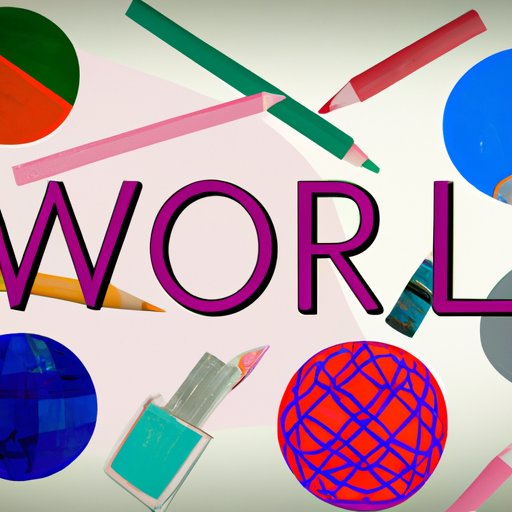I. Introduction
Art is a language that is universally understood by people from all walks of life, and one of the most important aspects of art is the medium through which it is created. From the brush to the camera, each medium used by artists has its unique artistry and beauty.
Whether you are a professional artist or someone who appreciates art, understanding what a medium in art is and its role is essential in appreciating and creating art. In this article, we will delve into the role of artistic mediums, ranging from traditional to digital and how they can impact an artist’s message.
II. Discovering the Role of Medium in Artistic Expression
When it comes to art, the medium through which an artist creates is fundamental to the message being conveyed. Through texture, color, and physicality, mediums invoke emotions and feelings that aid in storytelling.
For instance, oil paints, which can be manipulated and blended, allow for mixing and layering to create depth, texture, and variation in a work. On the other hand, charcoal can draw sharp, definitive lines while also promoting shading, deduction, and restraint.
Certain mediums can emphasize specific attributes of an artwork. For instance, watercolors can showcase the flow and sensitivity of a painting through the way pigment interacts with water. In contrast, acrylics accentuate bright and vivid hues that create the feeling of edginess or contemporary vigor.
Furthermore, the use of color and its pigment can mold an artistic piece’s meaning. Indeed, it is not uncommon for artists to use gradients to highlight moods and tones of their pieces.
Overall, each medium has its own unique properties that help create art. It is vital to understand the physical attributes of different mediums as artists seek to craft their work of art.
III. Exploring the Diversity of Mediums in Art from Traditional to Digital
Traditionally, artistic mediums referred to tactile materials that artists use for creating their pieces. Paintings, drawings, lithographs, printmaking, and sculptures are generally examples of traditional art forms and are made from physically manipulated mediums like ink, oil, charcoal, and marble.
On the other hand, digital art encompasses a range of contemporary media that modern artists use to create artworks with software, hardware, algorithms, and data. Digital mediums of art encompass graphic design, animation, 3D modelling, video games, virtual and augmented reality, and comic creation among others.
The advent of digital technology has given more power, speed, and variety to the tools used in creating modern art. Digital art has provided room to explore new perspectives as digital mediums strip away the traditional limitations that existed with traditional mediums.
However, that’s not to say that digital art does not have its drawbacks. While digital technology creates art that is adaptable, fast, and versatile, sometimes the energy and emotion captured through traditional mediums can be lost, leading some artists to prefer the timeless feel of traditional mediums.
IV. The Importance of Medium Choice in Elevating Your Artistic Vision
It is critical for artists to choose a medium that best suits their individual vision. The medium of choice can have a significant effect on the quality and direction of the work.
For instance, if an artist aims to create a painting that intertwines different levels, oil paint may be the best medium to achieve it. However, if the goal is to create a sharp and exact drawing, charcoal or ink may be the way to go.
Experimenting with different mediums can indeed facilitate the growth of an artist, allowing them to explore their potential further. As the artist progresses through their journey, they may discover that their favored medium is not the same one they started with.
V. Unveiling the Science behind Artistic Mediums and Their Effect on Creativity
Studies have shown that mediums in art affect how we perceive, process, and remember information, and can influence our creativity and emotions. For example, a 2016 study by Delfina Perez Adenis showed a correlation between certain colors and the human emotions they triggered.
However, it is worth noting that digital art is not always seen as ‘real’ or ‘serious’ as compared to traditional art forms. While this may be true concerning the tactile aspect of traditional art, digital art gives more room for creativity and can provide more opportunities to try new things. With digital art, artists get to cut out the time-consuming process of running experiments and have the liberty to explore their creativity without limits.
On the flip side, certain mediums in art can hinder creativity. For instance, when a particular medium becomes too comfort-inducing, artists may become too reliant on its effects, leading to a degree of predictability and a lack of willingness to experiment with other mediums.
VI. Conclusion
Understanding how mediums work, the effect they have on creativity, and emotions, and how they shape a message is invaluable to artists and art appreciators alike.
The importance of mediums in art can never be overstated, and the choice of the right medium can make or break an artist’s vision and message. Artists should be encouraged to continue experimenting, exploring and growing their craft, both in traditional and digital mediums. It is only then that they will appreciate the wonders of artistic expression and the power of medium in art.
